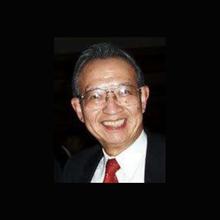Jeffrey Fong
Title of Talk: WHY ENGINEERS NEED TO KNOW HOW TO SOLVE EQUATIONS "EXACTLY" USING A COMPUTER
ABSTRACT:
Engineers are familiar with solving problems using software packages and are generally aware that the computer-generated solutions are always approximate and never exact. It is of great interest to engineers to find out the degree of approximation. As it turns out, in the gut of most computational software packages, there is always a subroutine that solves approximately a system of algebraic equations. Wouldn’t it be nice if we could replace such a subroutine with a Fortran code that solves equations exactly in a computer? In this talk, we will introduce such a Fortran code, which is based on a 1967 paper by Dr. Morris Newman of NIST and was later implemented by Dr. Tony Kearsley, also of NIST. We will demonstrate the power and limitations of such a code by solving a system of equations with a 50x50 matrix. We will then introduce the problem of how to deal with an approximate solution from a software package that acts like a black box. Using the finite element analysis software package as an example and a real-life engineering problem of finding the maximum stress around a crack in a pipe elbow, we demonstrate how the solution verification problem is solved.
Keywords: Algebraic equations; computational mathematics; finite element method; logistic function; nonlinear least squares fit; number theory; numerical analysis; structural engineering; system of equations; uncertainty analysis.
BIO:

Jeffrey Fong was educated at the University of Hong Kong (B.Sc., Engineering, First Class Honors), Columbia University, New York, NY (M.S., Engineering Mechanics), and Stanford University (Ph.D., Applied Mathematics and Mechanics). For eight years during 1955-63, he worked as a civil engineer in an engineering firm (Ebasco) in New York City with experience in the design of electric power plants (fossil-fueled, hydro, and nuclear). After earning his PhD at Stanford in 1966, he joined the National Institute of Standards and Technology (NIST), then the National Bureau of Standards (NBS), first as an NRC Postdoc in mathematics, and two years later as Physicist in its Applied and Computational Mathematics Division. During his 50+ years at NIST, he has worked in mathematical modeling, computational mathematics, and engineering reliability with applications in the study of the structural integrity and failure of metallic, polymeric, ceramic, and composite systems and components. He is a licensed professional engineer (P.E.) of the State of New York, a Fellow of the American Society of Mechanical Engineers, and a Fellow of the American Society of Testing and Materials (ASTM), International. He has published more than 150 journal or conference proceedings papers, edited or co-edited 17 conference proceedings’ books, and contributed two book chapters.

